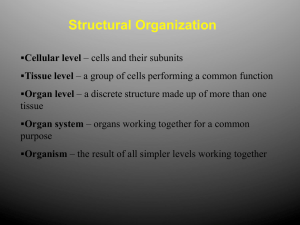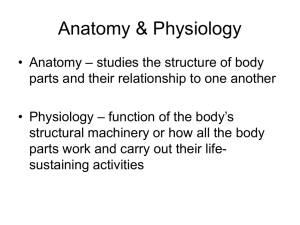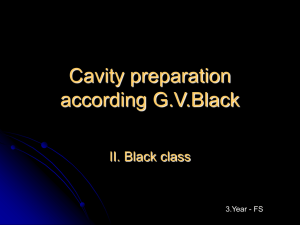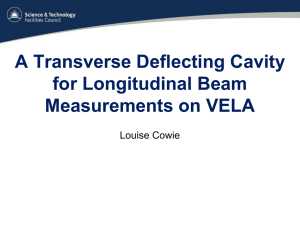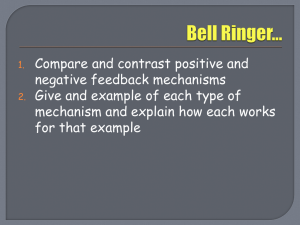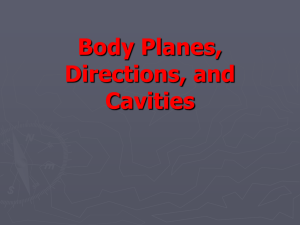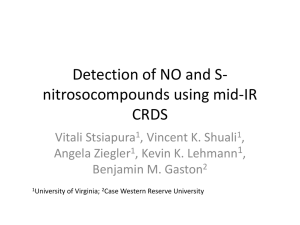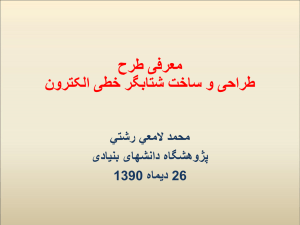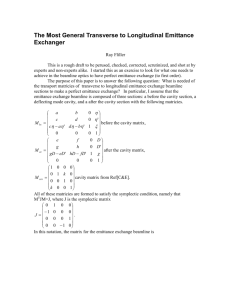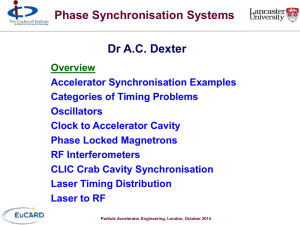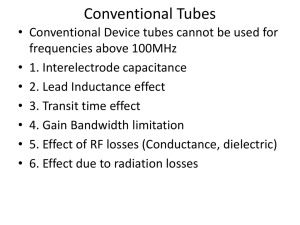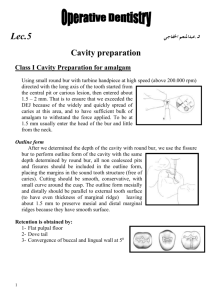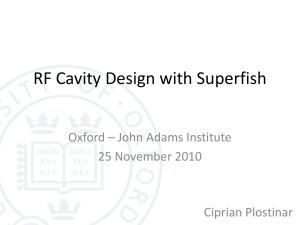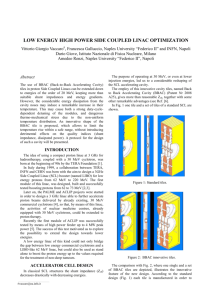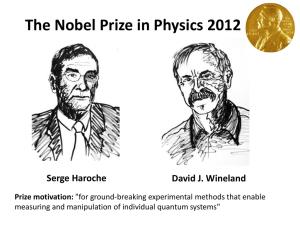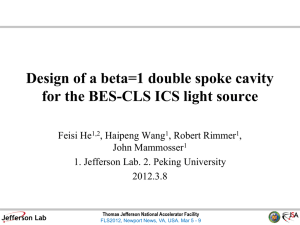Acceleration cavity
advertisement
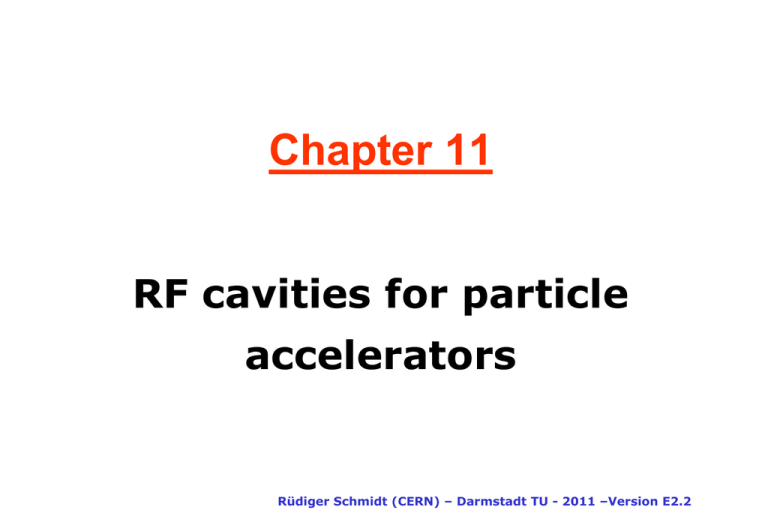
Chapter 11 RF cavities for particle accelerators Rüdiger Schmidt (CERN) – Darmstadt TU - 2011 –Version E2.2 Accelerating structures in linear and circular accelerators • Acceleration cavity (cavity) • Analogy between oscillating circuit and cavity • Cylindrical cavity • Shunt impedance and quality factor 2 Acceleration in the cylindrical cavityT=0 (accelerating phase) (100 MHz) E (t) 2a z E(z) E0 g z 3 Linear and circular accelerators Linear accelerator: Acceleration by traveling once through many RF Circular accelerator: Acceleration by travelling many times through few RF cavities 4 Analogy between cavity and oscillating circuit E (t) E (t) C L R A simple RF accelerator would work with a capacitor (with an opening for the beam) and a coil in parallel to the capacitor. The energy oscillates between electric and magnetic field. L R 5 Analogy between cavity and oscillating circuit Oscillating circuit with capacitor, coil and resistance. Resonance frequency Quality factor : Q Time constant : ω res E (t) C 1 L C L ω res L R R for damping : R C 6 For a frequency of 100 MHz, a typical value for an accelerator, the inductance of the coil and the capacity of the condenser must be chosen very small. Example: A c 100 cm Capacity of a capacitor with a surface of two plates of Capacity 2 and a distance between the d c 1 cm C c 0 Ac dc 2 A s 100 cm , a length of Inductivity of a coil with a surface of N s 10 and a number of turns of 2 Inductivity L c 0 N s As ls C c 8.854 pF L c 12.566 H Oscillation frequency f c 1 2 1 Lc Cc f c 15.088 MHz l s 10 cm From oscillating circuit to the cavity E (t) E (t) C C B (t) L B (t) E (t) L The fields in the cavity oscillate in TM010 mode (no longitudinal magnetic field). There are an infinite number of oscilllation modes, but only a few are used for cavities (calculation from Maxwells equations, application for waveguides, for example K.Wille) 8 Parameter of a cylindrical cavity („pill-box“) E (t) 2a z A cylindrical cavity with the length of g, the aperture 2*a and the field of E(t) g 9 Acceleration in a cylindrical cavity E (t) 2a z E(z) E0 g z 10 Cavity with rotational symmetry The cavity parameter depend on the geometry and the material: • Geometry • Material E (t) r0 => Frequency => Quality factor z gc Comes from Besselfunction (Solution of wave equation) 11 Field strength for E010 mode for a „pillbox cavity“ E (t) r0 0.231 r0 æ 2.40483 r ö ÷ r0 è ø Ez ( r) J0 ç z æ 2.40483 r ö ÷ r0 è ø Hq ( r) J1 ç 1 0.8 Ez ( r ) 0.6 Hq ( r) 0.4 0.2 0 0 0.029 0.058 0.087 0.12 r 0.14 0.17 0.2 0.23 12 The energy gain of a charged particle is : g /2 E q E z ( z , t ) dz g /2 The electrical field as a function of time is : E z (t) E 0 cos ( t ) with E 0 U0 g The particle has a (constant) Therefore : E e0 U 0 g velocity v : g /2 z g /2 v cos( ) dz Integratio n yields : sin( E e0 U 0 g 2 v g ) sin( Definition : Transit time factor T tr g 2 v g 2 v 2 v Remember : T tr 1 ) Example for „Transit Time Factor“ 14 Illustration for the electric field in the RF cavity 15 Superconducting RF cavity for Tesla and X-ray laser at DESY RF cavity with 9 cells 16 Normal-conducting RF cavity for LEP 17 Parameters for Cavities Shunt impedance (Definition for a circular accelerator) : Q factor: 38000 g /2 E z ( z ) dz 2 R sh g /2 Pc For the DORIS Cavity : U0 2 2 Pc Q 0 38000 R sh 3 . 0 10 with Pc Power loss in Cavity 6 Ohm PHF 50 kW U 0 548 kV Quality factor Q : Q Factor Q0 W Pc 1 Stored energy Energy loss per cycle W Pc 18


